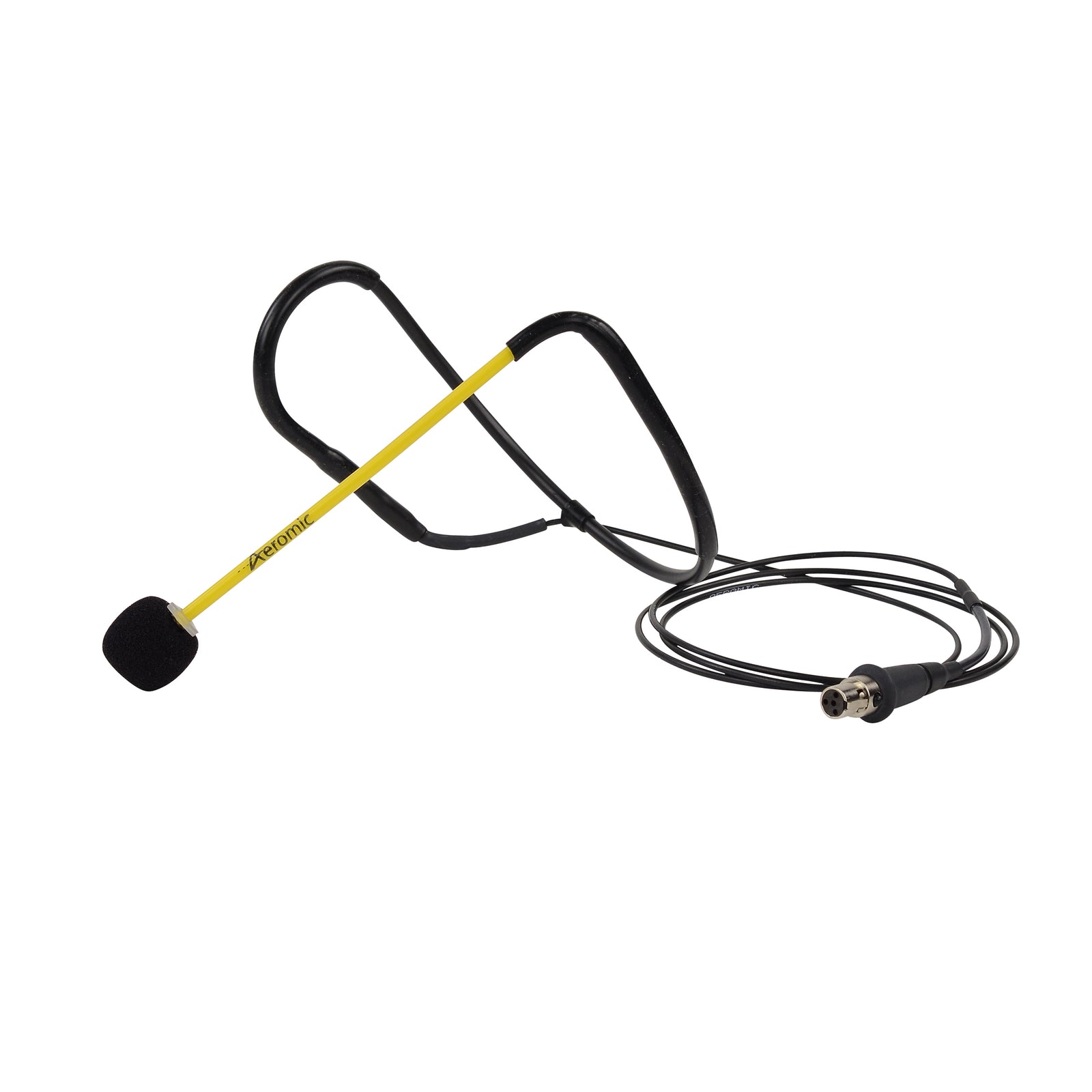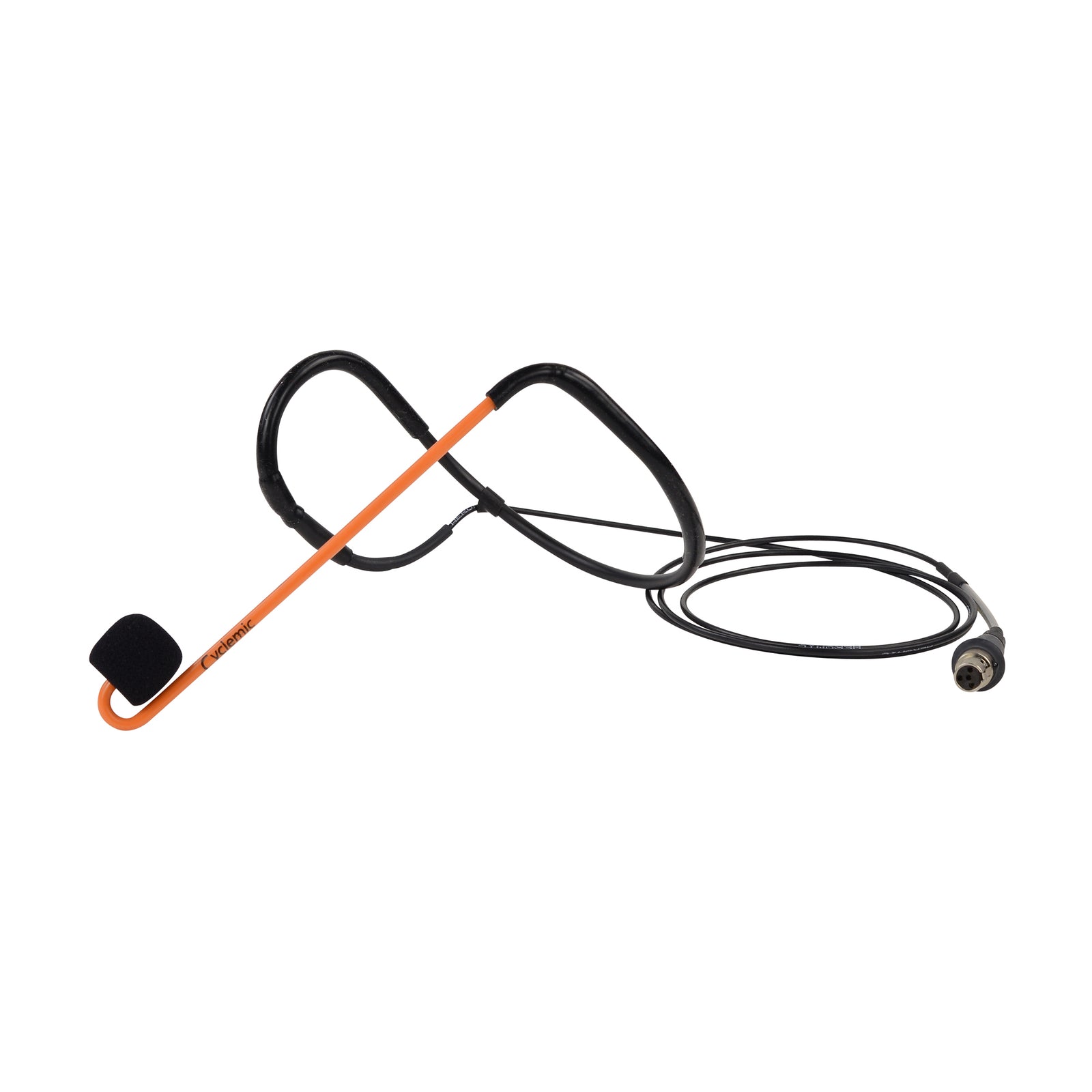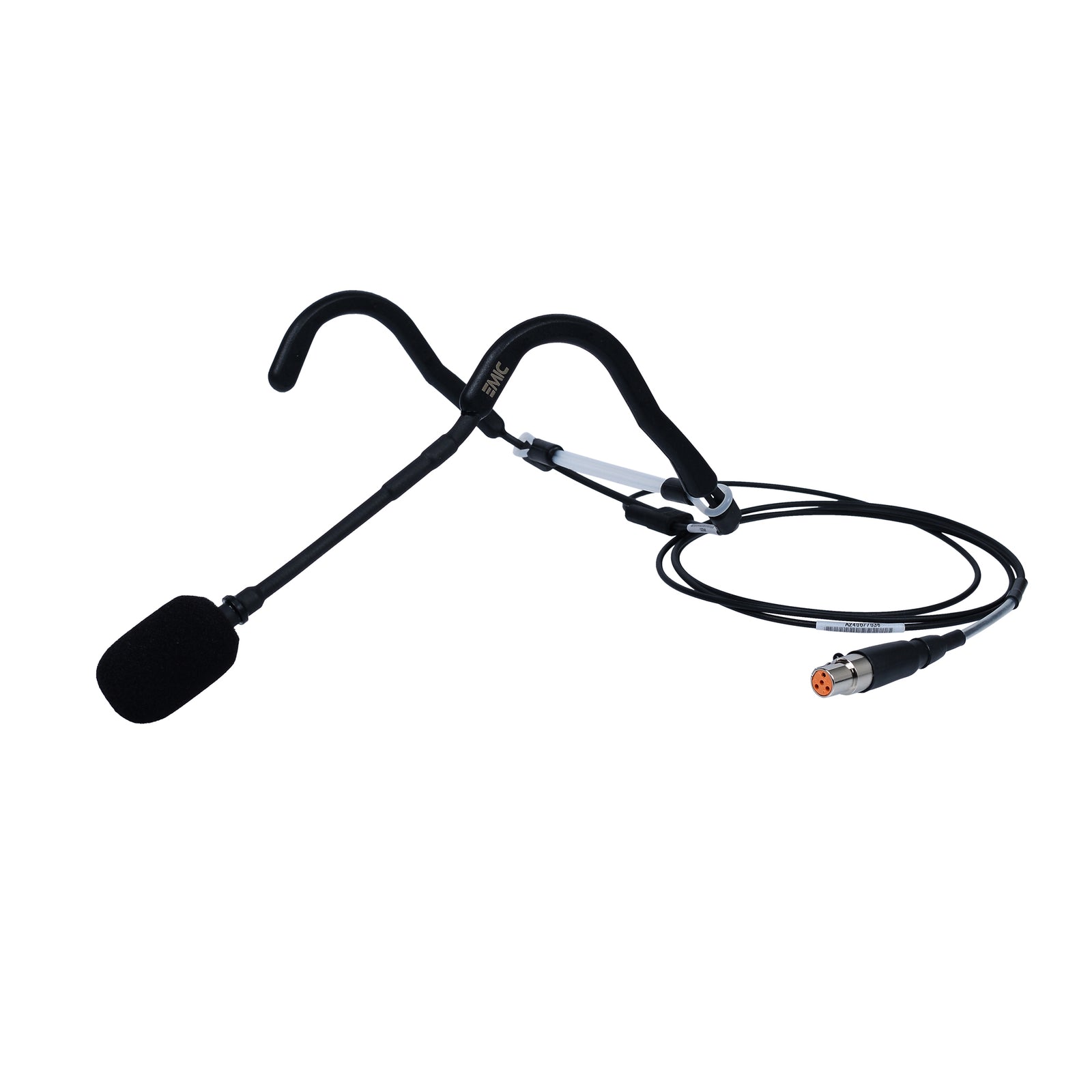First-Time Fitness Instructor Guide
Welcome to Fitness Audio's Guide to Running Effective Fitness Classes for First-Time Instructors. This comprehensive guide is designed to equip new Fitness Instructors with the knowledge and skills necessary to lead engaging and successful fitness classes. Whether you're teaching HIIT, spin, Pilates, Zumba, or bootcamp, this guide will provide you with valuable insights into equipment, communication techniques, class management strategies, safety protocols, and continuous professional development.
1. Understanding Your Equipment
Before diving into teaching fitness classes, it's crucial to have a thorough understanding of the equipment you'll be using. This section will cover both fitness equipment and audio-visual equipment.
1.1 Fitness Equipment
For many fitness classes, there is no class without the fitness equipment. The type of fitness equipment you need will depend on the type of class you teach.
1.1.1 HIIT and Circuit Training
HIITand circuit training require dynamic equipment setups to accommodate rapid transitions between exercises. Equipment used for these classes typically include kettlebells, battle ropes, plyometric boxes, and resistance bands. The exact fitness equipment you use in your HIIT or circuit class will depend on what exercises you choose to include in your class. As such, we advise you to do your research and check out what other HIIT and circuit classes do!
1.1.2 Spin
Spin classes rely heavily on stationary bikes and specialised accessories to deliver intense cardio workouts. Familiarise yourself with different bike models and how to adjust them for optimal performance. Additionally, understanding the principles of bike setup, such as saddle height and handlebar position, ensures participants can ride comfortably and safely throughout the class. Some Spin Instructors also like to integrate an element of weight training into their classes. If you want to do something similar, consider investing in free weights or dumbbells for your spin class.
1.1.3 Pilates
When it comes to Pilates, the fitness equipment you need will depend on the type of Pilates you teach. If you teach reformer pilates, you will need to invest in reformers, whilst if you teach mat Pilates, you will need to invest in mats. You may also want to integrate other exercise and fitness equipment into your classes. Once again, we recommend you do your research on this! Regardless of what equipment you choose to use in your Pilates class, make sure you know how to set it up and use it properly to facilitate safe and effective workouts for both you and your clients.
1.1.4 Zumba
Zumba classes typically do not require additional fitness equipment. Understanding how to create a vibrant atmosphere that makes your clients want to dance is a must though! You will need to learn how to incorporate music and choreography into your classes to keep your participants motivated and engaged. In addition to mastering basic dance steps and rhythms, Zumba Instructors should also learn how to create seamless transitions between songs and build playlists that cater to different fitness levels and preferences!
1.1.5 Bootcamp
Bootcamp workouts typically incorporate a variety of equipment, including weights, resistance bands, and agility tools, to provide full-body conditioning. Mastering the use of these tools will enable you to create diverse and challenging routines. From partner drills and obstacle courses to functional movements and interval training, the possibilities are endless when incorporating bootcamp equipment into your classes. Like for HIIT and circuit classes, we recommend you research other bootcamp classes, the exercises they do, and the equipment they use!
1.2 Audio Visual Equipment
In addition to fitness equipment, audio-visual equipment plays a vital role in delivering immersive and engaging fitness experiences. This section will cover various components of audio-visual setups commonly used in fitness classes.
1.2.1 Microphone Systems
Microphone systems allow instructors to amplify their voices and communicate effectively with participants, even in noisy gym environments. Fitness-specific microphones, transmitters, and receivers are designed to withstand sweat and movement, ensuring clear and reliable audio transmission throughout your classes.
1.2.1.1 Fitness Microphones
Microphones are critical in ensuring your clients can hear you loud and clear and follow along with ease! Specialised fitness microphones are designed to withstand sweat and movement, ensuring clear and reliable audio transmission throughout your classes. With features like moisture-resistant coatings and secure attachment mechanisms, fitness microphones provide Fitness Instructors with the durability and performance needed to lead dynamic workouts without interruption.
1.2.1.2 Microphone Transmitters
Transmitters are essential for wirelessly transmitting audio signals from the microphone to the sound system. This provides Fitness Instructors with freedom of movement during classes. Whether clipped to clothing or worn on a belt pack, transmitters deliver high-quality audio with minimal interference, allowing Fitness Trainers to engage with participants from any part of the room.
1.2.1.3 Microphone Receivers
Receivers capture and process audio signals from transmitters, converting them into sound output through the speakers. With features like automatic frequency selection and signal stability monitoring, receivers ensure consistent audio performance, even in crowded gym environments with multiple wireless devices in use.
1.2.2 Sound Systems
Quality sound systems are essential for delivering music and instructions with clarity and impact, enhancing the overall atmosphere of your classes. Audio mixers, speakers, and subwoofers work together to create immersive soundscapes that energise and motivate participants throughout their workouts.
1.2.2.1 Audio Mixers
Audio mixers allow Group Fitness Instructors to adjust volume levels, balance audio inputs, and add effects to create a polished sound mix tailored to their class format. They give Instructors greater control over the audio, allowing them to adjust the music and microphone audio so that they can pump their music while still being heard and understood by their class.
1.2.2.2 Speakers
Speakers reproduce sound with fidelity and coverage, ensuring that participants can hear instructions and music clearly from any part of the room. From compact portable speakers for small studio spaces and outdoor classes to large-scale PA systems for group fitness studios, speakers come in a variety of sizes and configurations to suit different class environments and audience sizes.
1.2.2.3 Subwoofers
Subwoofers enhance the low-frequency response of audio systems, providing deep bass for music tracks and immersive sound effects during workouts. By adding rich, full-bodied bass to your audio mix, subwoofers create a more dynamic and engaging listening experience that enhances the intensity and excitement of your classes.
1.2.3 Lighting Systems
Lighting systems can enhance the ambiance of your classes and create visual cues to guide participants through exercises and transitions. From simple stage lighting setups to programmable LED fixtures that sync with music and movement, lighting systems add an extra layer of excitement and immersion to your fitness classes, enhancing the overall experience for participants.
1.2.4 Microphone Belts
Microphone belts provide a secure and comfortable way to wear wireless microphones and store their transmitter during workouts, allowing Fitness Instructors to move freely without interference. With adjustable straps and durable, moisture-wicking materials, microphone belts ensure a snug fit that stays in place during dynamic movements, allowing Fitness Trainers to focus on leading engaging and impactful classes without distractions.
2. Effective Communication
Effective communication is essential for guiding and motivating participants throughout your fitness classes. This section will explore both verbal and non-verbal communication techniques.
2.1 Verbal Communication
Clear and confident verbal communication is crucial for delivering instructions, cues, and encouragement to participants.
2.1.1 Voice Projection
Project your voice clearly and confidently to ensure that all participants can hear and understand your instructions, even in a noisy gym environment. Practise proper breathing techniques and vocal warm-ups to maintain vocal stamina and clarity throughout your classes, projecting energy and enthusiasm to keep participants engaged and motivated. Do your research on voice projection techniques and ask your fellow Fitness Instructors for tips!
2.1.2 Clear Instructions
Provide concise and easy-to-follow instructions for exercises, transitions, and modifications, ensuring that participants know what to do at all times. Use simple language and avoid jargon to make instructions accessible to participants of all fitness levels and backgrounds, checking for understanding and offering clarifications as needed to ensure safety and effectiveness.
2.1.3 Music Integration
Integrate music seamlessly into your classes to enhance motivation, rhythm, and atmosphere, aligning the tempo with the intensity of each workout segment. Choose music tracks that complement the energy and flow of your class format, using playlists to build anticipation, create momentum, and support transitions between exercises. Consider the bpm of each song to encourage participants to sync their movements with the beat for a more immersive and enjoyable experience that gets them results!
2.2 Non-Verbal Communication
Non-verbal cues can reinforce verbal instructions and create a connection with participants, enhancing their overall experience.
2.2.1 Body Language
Use confident body language to convey authority, enthusiasm, and positivity, inspiring participants to push themselves and stay engaged throughout the class. Maintain an open and upright posture, make eye contact with participants, and use gestures and facial expressions to express encouragement and support, fostering a sense of connection and rapport that enhances motivation and trust.
2.2.2 Demonstrations
Demonstrate exercises and movements with clarity and precision to provide visual guidance and ensure that participants perform them safely and effectively. Break down complex movements into smaller steps, using mirror cues and verbal descriptions to highlight key points and common pitfalls, encouraging participants to observe and mimic your actions for optimal technique and performance.
3. Class Management Techniques
Effective class management is essential for creating a positive and productive learning environment. This section will cover various techniques for structuring and engaging participants in your fitness classes.
3.1 Class Structure
Establishing a clear and organised class structure helps participants know what to expect and maximises the efficiency of your workouts.
3.1.1 Warm-Up
Begin each class with a dynamic warm-up to prepare participants' bodies and minds for the upcoming workout, focusing on mobility, activation, and cardiovascular readiness. Incorporate a variety of movements and exercises that target major muscle groups and movement patterns, gradually increasing intensity and range of motion to elevate heart rate and body temperature. This will prime your clients’ bodies for optimal performance and reduce the risk of injury.
3.1.2 Cool-Down
Conclude each class with a thorough cool-down to facilitate recovery, flexibility, and relaxation, incorporating static stretches and breathing exercises. Guide participants through gentle movements and stretches that target muscles worked during the workout. Encourage deep breathing and mindfulness to promote circulation, reduce muscle tension, and enhance recovery. This will leave participants feeling refreshed and rejuvenated after their session and minimise any post-workout aches.
3.1.3 Exercise Progressions
Gradually increase the intensity and complexity of exercises throughout the class, providing options for both beginners and advanced participants to ensure inclusivity and progression. Start with foundational movements and variations that establish proper form and technique, progressively adding challenges such as resistance, speed, and range of motion to accommodate individual fitness levels and goals, empowering participants to push their limits and achieve meaningful results over time.
3.2 Engagement Strategies
Keeping participants engaged and motivated is essential for maximising the effectiveness of your classes and fostering a sense of community.
3.2.1 Interactivity
Encourage interaction and camaraderie among participants through partner drills, group challenges, and supportive communication. This will foster a sense of community within your class that enhances motivation and accountability. It will also develop a sense of loyalty between your clients and your class, so they are more likely to stick with your class rather than look elsewhere.
3.2.2 Feedback
Provide regular feedback and encouragement to participants, acknowledging their efforts and achievements, and offering constructive guidance for improvement. Recognise individual progress and milestones, and celebrate these successes to boost confidence and motivation. In addition, don’t shy away from offering specific feedback and corrections to your students to enhance their technique and performance and help them get results sooner. Also consider asking your clients for feedback on your class. This will help you identify and fix any pain points that may be affecting your clients’ enjoyment of your class.
4. Safety and Wellness Protocols
Prioritising the safety and well-being of participants is paramount for any Fitness Instructor. This section will outline essential safety precautions and wellness protocols to ensure a safe and enjoyable experience for all.
4.1 Safety Precautions
Implementing safety precautions reduces the risk of injury and creates a secure environment for participants to exercise. Clear the exercise area of any hazards or obstacles, ensuring adequate space for movement and minimising the risk of trips or falls. Inspect equipment regularly for signs of wear or damage, repairing or replacing any faulty components to prevent accidents or malfunctions during workouts. Educate participants on proper form and technique for each exercise, emphasising safety guidelines and modifications to accommodate individual needs and limitations, empowering them to exercise with confidence and reduce the risk of injury.
4.2 Participant Wellbeing
Promoting participant wellbeing involves addressing physical, emotional, and social aspects of health to support holistic wellness.
4.2.1 Injury Prevention
Educate participants on proper exercise technique, alignment, and form to minimise the risk of injuries during workouts. Emphasise the importance of listening to their bodies and respecting their limits, encouraging them to communicate any discomfort or pain and offering modifications or alternatives to prevent aggravating existing injuries or conditions. Incorporate injury prevention strategies such as dynamic warm-ups, foam rolling, and mobility exercises to improve flexibility, stability, and resilience, reducing the likelihood of strains, sprains, and overuse injuries over time.
4.2.2 Recovery
Encourage adequate rest, hydration, and nutrition to support recovery and optimise performance, emphasising the importance of post-workout recovery strategies such as proper hydration, refuelling with nutrient-dense foods, and prioritising quality sleep. Provide your clients with resources and guidance on active recovery techniques such as foam rolling, stretching, and low-impact activities to promote circulation, reduce muscle soreness, and accelerate healing. This will empower participants to incorporate self-care practices into their daily routines and maximise the benefits of their workouts.
4.2.3 Inclusivity
Create an inclusive and supportive environment where participants of all fitness levels, abilities, and backgrounds feel welcome and respected. Foster a culture of acceptance and diversity, celebrating individual differences and promoting a sense of belonging for everyone in your classes. Adapt exercises and instructions to accommodate diverse needs and preferences, offering modifications and alternatives that allow participants to participate fully and safely regardless of age, gender, or physical condition. This will help foster a sense of empowerment and belonging that encourages long-term engagement and adherence to fitness goals!
5. Continuous Professional Development
Continuously improving your skills and knowledge is essential for staying current and effective as a Fitness Instructor. This section will explore various avenues for professional development and growth.
5.1 Further Education
Invest in ongoing education and training opportunities to expand your expertise and credentials in the fitness industry.
5.1.1 Workshops and Certification
Attend workshops, seminars, and certification programs to deepen your understanding of exercise science, coaching methodologies, and specialised fitness modalities. Seek out reputable organisations and accredited programs that offer comprehensive training and practical experience, ensuring that you acquire the knowledge and skills needed to excel in your role as a fitness professional.
5.1.2 Networking
Connect with fellow fitness professionals, industry experts, and mentors to exchange ideas, share experiences, and build a supportive professional network. Join professional associations and online communities, attend industry events and conferences, and participate in mentorship programs to expand your professional circle, gain valuable insights, and access resources and opportunities for career advancement and personal growth.
5.2 Technological Integration
Embrace technological advancements to enhance the delivery and experience of your fitness classes.
5.2.1 Wearable Technology
Incorporate wearable fitness trackers and sensors to monitor participants' performance, track progress, and provide personalised feedback and recommendations. Explore the latest advancements in wearable technology, such as heart rate monitors, activity trackers, and smartwatches, that offer real-time data and insights into participants' exercise intensity, calorie expenditure, and recovery status, empowering them to optimise their workouts and achieve their fitness goals more effectively.
5.2.2 Hybrid Classes
Explore hybrid class formats that combine in-person and virtual elements to reach a broader audience and adapt to changing trends and preferences. Utilise video streaming platforms and virtual fitness apps to offer live-streamed or on-demand classes that participants can access from anywhere, allowing them to participate in workouts at their convenience. This will also help you expand your reach and impact as a Group Fitness Instructor.
5.2.3 Audio Visual Innovations
Stay updated on the latest audio-visual technologies and innovations to enhance the audio quality, visual presentation, and overall immersion of your classes. Experiment with interactive displays, projection mapping, and augmented reality to create dynamic and engaging visual experiences that captivate and motivate participants, enhancing the overall atmosphere and enjoyment of your classes. Invest in high-quality audio equipment, such as wireless microphones, sound systems, and speakers, that deliver crystal-clear sound and seamless integration with music and voice cues, ensuring that participants can hear and follow your instructions with clarity and confidence.
Conclusion
Congratulations on completing Fitness Audio's Guide to Running Effective Fitness Classes for First-Time Instructors! Armed with the knowledge and skills outlined in this guide, you're well-equipped to lead engaging, safe, and successful fitness classes that inspire and empower participants on their wellness journey.
Remember to continue learning, adapting, and refining your teaching approach to deliver exceptional experiences and make a positive impact in the lives of others. By prioritising effective communication, implementing sound class management techniques, and prioritising participant safety and wellbeing, you'll not only become a proficient Fitness Trainer, but also cultivate a loyal following of motivated and satisfied participants!
As you embark on your journey as a fitness professional, stay committed to continuous professional development, embracing new technologies and methodologies that enhance the delivery and experience of your classes. Your dedication to excellence and passion for helping others achieve their fitness goals will undoubtedly lead to long-term success and fulfilment in your role as a Fitness Instructor!
If you require any further advice or information on selecting sound and lighting products for your fitness class, don’t hesitate to reach out to the Fitness Audio team! Our team of experienced sound and lighting professionals will inform you on what AV equipment you do and do not need, and answer any questions you may have on gym sound and lighting.




